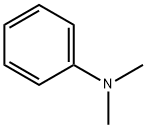A3126112
Dimethyl Trisulfide , 98% , 3658-80-8
CAS NO.:3658-80-8
Empirical Formula: C2H6S3
Molecular Weight: 126.26
MDL number: MFCD00039808
EINECS: 222-910-9
| Pack Size | Price | Stock | Quantity |
| 5G | RMB60.80 | In Stock |
|
| 25G | RMB142.40 | In Stock |
|
| 100G | RMB516.80 | In Stock |
|
| 500g | RMB2480.00 | In Stock |
|
| others | Enquire |
Update time: 2022-07-08
PRODUCT Properties
| Melting point: | −68 °C(lit.) |
| Boiling point: | 58 °C15 mm Hg(lit.) |
| Density | 1.202 g/mL at 25 °C(lit.) |
| FEMA | 3275 | DIMETHYL TRISULFIDE |
| refractive index | n |
| Flash point: | 133 °F |
| storage temp. | Store at -20°C |
| solubility | Chloroform (Sparingly), Methanol (Slightly) |
| form | Liquid |
| color | Clear yellow |
| Odor | at 0.10 % in propylene glycol. sulfurous cooked onion savory meaty |
| Odor Type | alliaceous |
| biological source | synthetic |
| Water Solubility | Insoluble in water. |
| JECFA Number | 582 |
| BRN | 1731604 |
| LogP | 2.93 |
| CAS DataBase Reference | 3658-80-8(CAS DataBase Reference) |
| NIST Chemistry Reference | Trisulfide, dimethyl(3658-80-8) |
| EPA Substance Registry System | Trisulfide, dimethyl (3658-80-8) |
Description and Uses
Dimethyl trisulfide is reported as a major aroma component in cooked Brassicaceous vegetables. Trap baits containing dimethyl trisulfide have been used to capture Calliphora loewi and other blowflies. Dimethyl trisulfide along with dimethyl sulfide and dimethyl disulfide have been confirmed as volatile compounds given off by the fly-attracting plant known as dead-horse arum (Helicodiceros muscivorus). These flies are attracted to the odor of fetid meat and help pollinate this plant.
Safety
| Symbol(GHS) |   GHS02,GHS07 |
| Signal word | Warning |
| Hazard statements | H226-H302-H315-H319-H335 |
| Precautionary statements | P210-P301+P312+P330-P302+P352-P305+P351+P338 |
| Hazard Codes | Xn |
| Risk Statements | 22-36/37/38-36/38-20/22-10 |
| Safety Statements | 26-37/39-16-24/25 |
| RIDADR | UN 1993 3/PG 3 |
| WGK Germany | 3 |
| F | 10-23 |
| TSCA | Yes |
| HazardClass | 3.2 |
| PackingGroup | III |
| HS Code | 29309090 |




